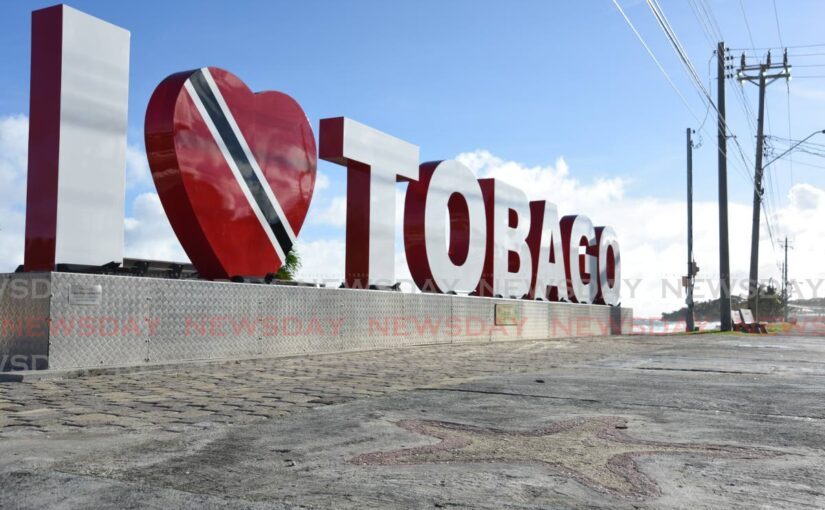Dr Rita Pemberton THE LABOURING class was the largest social group in post-Emancipation Tobago. This class was formed from the enslaved African...
Vous n'êtes pas connecté
- English
- Français
- عربي
- Español
- Deutsch
- Português
- русский язык
- Català
- Italiano
- Nederlands, Vlaams
- Norsk
- فارسی
- বাংলা
- اردو
- Azərbaycan dili
- Bahasa Indonesia
- Հայերեն
- Ελληνικά
- Bosanski jezik
- українська мова
- Íslenska
- Türkmen, Түркмен
- Türkçe
- Shqip
- Eesti keel
- magyar
- Қазақ тілі
- Kalaallisut ; kalaallit oqaasii
- Lietuvių kalba
- Latviešu valoda
- македонски јазик
- Монгол
- Bahasa Melayu ; بهاس ملايو
- ဗမာစာ
- Slovenščina
- тоҷикӣ ; toğikī ; تاجیکی
- ไทย
- O'zbek ; Ўзбек ; أۇزبېك
- Tiếng Việt
- ភាសាខ្មែរ
- རྫོང་ཁ
- Soomaaliga ; af Soomaali
Rubriques :
 Maroc - NEWSDAY.CO.TT - A la Une - 08/Aug 06:43
Maroc - NEWSDAY.CO.TT - A la Une - 08/Aug 06:43
Cauldron of contests: Early post-Emancipation Tobago
Dr Rita Pemberton AMID church service and celebration, Emancipation in Tobago began with strong expressions of resistance which were manifested in strikes across the island, some of which lasted for weeks. In this way the freed Africans sent a strong message that they were not prepared to comply with the labour demands of the planters and their terms of employment. From the start of the campaign to end the slave trade, planters in Tobago were concerned about their labour supply. Before the passage of the act to terminate the trade in captured Africans, Tobago planters sought special consideration from the imperial authorities, to no avail. They argued that the special conditions the island faced jeopardised their labour supply, because of which the island was deprived of a satisfactory supply of labour for optimal plantation operations. These arguments did not sway the imperial government, which proceeded with its anti-slave trade laws – the Limitation Act in 1805/6 and then the act to terminate the trade in captive Africans in 1807/1808. During the years after 1808, Tobago planters were driven by the conviction that the main problem of the sugar industry was a shortage of labour, to which they attributed its decline across the 19th century. The planters functioned under the conviction that the industry had been dealt a mortal blow by Emancipation and, as a result, its fortunes could only be resuscitated if what they dubbed the “labour problem” was resolved. Hence they emphasised the labour issue as they sought to deal with the challenges in sugar production during the 19th century. For them the crux of the matter was the ability to control the workers. Having endured the conflicts during the period of apprenticeship, the African population of Tobago was keenly aware of the challenges which lay ahead. The sentiments expressed by planters, and their practices during the period of apprenticeship, had clearly demonstrated their intent regarding their workers. Planters held on to the hope that their basic problem could be solved by increasing their control over their workforce. To achieve this, their strategy was twofold. Of these the more popular was introducing immigrant workers to increase the labour force, drive wages down and the bonus effect of demonstrating to the resident workers what were considered appropriate desirable work habits. However, with no support from the imperial government, planters placed greater dependence on traditional practices. They resisted any change and sought to maintain plantation operations in the same manner as during enslavement. They wanted total control. But in 1838 the Tobago workers were in fighting mood. They refused to accept the continuation of the practices enforced during enslavement, they resisted the low wages offered and were determined to fight for better terms of employment, a process which started during apprenticeship, 1834-1838. They intended to take control of their labour. Therefore in 1838, planters and workers were poised to battle with each other. When it became clear that the planters had no option but to work with the existing resident cohort of workers, they noted the continuation of the resistance strategies demonstrated during apprenticeship and the mood of the workers in 1838. They had to find a strategy to enhance their ability to control workers to function in the way they wanted. After two years of Emancipation, the hunt was on for another method which it was hoped would provide the employers with the desired greater control. The problem of control was complex. The freed people were engaged in multiple relationships with the same plantation owner – as estate labourers, tenants of house spots, grazing grounds and provision grounds, part-time labourers, tenants with or without obligations, cane farmers or tenants at will. Each of these provided the opportunity for conflict, which, when it occurred in one area, invariably affected the relationship in all the other areas. In particular, tensions regarding labour could affect tenancy arrangements and falling out with the landlord over provision grounds could be detrimental to the tenant, who could lose the crops he/she had planted. The shortage of cash on the island led to payments and incentives in kind: sugar, syrup and rum. This system stimulated another realm of conflict, because there was always dissatisfaction over the adequacy of payments for the services the workers provided. Complaints were made to the special magistrates, but there was no system dedicated to conflict-resolution between the parties and the conflicts were left to fester. Amid the hassle and the contentious relations between worker and employers, both were bound to the declining plantations. There existed no alternative to estate labour for the freed Africans; and on the other hand, planters, who were unable to attract credit, had no option but to employ the resisting freed Africans to keep the sugar industry alive. Within two years of Emancipation, an alternative system of labour had been identified and was introduced to Prospect and Mary’s Hill Estates in 1842. The metairie or metayage system of sharecropping, which was based on contracts, did not gain immediate popularity, because it was considered unprofitable and disadvantageous to the workers, who were left to the will of their employers. It took another five years before the system came into widespread use. The Sugar Duties Act of 1846 and the hurricane of 1847 facilitated the extensive use of the system, which was imposed on the existing conflict and brought its own issues over control, which increased the cauldron of conflicts on the island. Despite planters’ complaints about the poor agricultural practices of the workers, they benefited from the system, which allowed them to preserve their operations without large cash outlays; and also they did value the contractual binding of workers to the estate. Workers, on the other hand, saw how they could manipulate the system to advance their own interests, facilitating increased access to land, to which planters had been so strongly opposed. Hence the widespread use of the metayage system stimulated another round of planter/worker tensions, which would last until the demise of the sugar industry towards the end of the 19th century. The post Cauldron of contests: Early post-Emancipation Tobago appeared first on Trinidad and Tobago Newsday.
Articles similaires
Social mobility of coloureds, blacks in post-Emancipation Tobago
Dr Rita Pemberton ONE OF the overflows of the period of enslavement which had a significant impact on the social fabric of Tobago is the appearance...
Hidden gems – Five Islands
Kami Allong and Alexandra Gray Welcome to the third instalment of our Hidden Gems series, where we shall embark on a journey to share the secrets of...
Senator Maharaj: People losing hope for change
FORMER journalist and Independent Senator Sunity Maharaj says constitutional reform is the beginning of a means to begin to anchor a culture of...
What’s in store for Store Bay?
THE question on everyone’s lips is what’s in store for one of the most beautiful beaches in Tobago. The Tobago House of Assembly intends to turn...
Can Trinidad and Tobago really go cashless?
I had intended to write on the re-aligned feminisation of poverty this week but the headlines in the press about the results of the CSEC maths and...
Scientist who calculated independence
Jerome Teelucksingh THE OLDER generation will recall the historic moment at the Red House in Port of Spain when the Union Jack was lowered and the...
Ex-gang members: ‘Spare the innocents’
GANG activity in TT is pushing the murder toll to record highs every year. For some, gangs determine where they go and what they wear. Gang culture...
I Love Tobago sign to be relocated
THE I Love Tobago gateway sign on Milford Road, Scarborough, is expected to be moved to the esplanade, in the heart of the capital city, by the end...
What Broke Libertarianism? – Analysis
Nearly the whole of the professional, intellectual, and government class has betrayed the cause of universal human liberty in our times. But among...
Les derniers communiqués
-
Aucun élément









